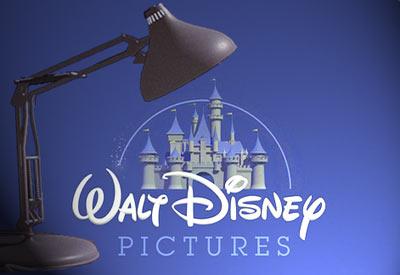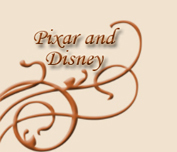|
 Pixar and Disney had disagreements after the production of Toy Story 2. Originally intended as a straight-to-video release (and thus not part of Pixar's three-picture deal), the film was eventually upgraded to a theatrical release during production. Pixar demanded that the film then be counted toward the three-picture agreement, but Disney refused. Pixar's first five feature films have collectively grossed more than $2.5 billion, equivalent to the highest per-film average gross in the industry. Pixar and Disney had disagreements after the production of Toy Story 2. Originally intended as a straight-to-video release (and thus not part of Pixar's three-picture deal), the film was eventually upgraded to a theatrical release during production. Pixar demanded that the film then be counted toward the three-picture agreement, but Disney refused. Pixar's first five feature films have collectively grossed more than $2.5 billion, equivalent to the highest per-film average gross in the industry.
Though profitable for both, Pixar later complained that the arrangement was not equitable. Pixar was responsible for creation and production, while Disney handled marketing and distribution. Profits and production costs were split 50-50, but Disney exclusively owned all story and sequel rights and also collected a distribution fee. The lack of story and sequel rights were perhaps the most onerous to Pixar and set the stage for a contentious relationship.
The two companies attempted to reach a new agreement in early 2004. The new deal would be only for distribution, as Pixar intended to control production and own the resulting film properties themselves. The company also wanted to finance their films on their own and collect 100 percent of the profits, paying Disney only the 10 to 15 percent distribution fee. More importantly, as part of any distribution agreement with Disney, Pixar demanded control over films already in production under their old agreement, including The Incredibles and Cars. These conditions were unacceptable to Disney, but Pixar would not concede.
Disagreements between Steve Jobs and then Disney Chairman and CEO Michael Eisner made the negotiations more difficult than they otherwise might have been. They broke down completely in mid-2004, with Jobs declaring that Pixar was actively seeking partners other than Disney. Pixar did not enter negotiations with other distributors. After a lengthy hiatus, negotiations between the two companies resumed following the departure of Eisner from Disney in September 2005. In preparation for potential fallout between Pixar and Disney, Jobs announced in late 2004 that Pixar would no longer release movies at the Disney-dictated November time frame, but during the more lucrative early summer months. This would also allow Pixar to release DVDs for their major releases during the Christmas shopping season. An added benefit of delaying Cars was to extend the time frame remaining on the Pixar-Disney contract to see how things would play out between the two companies.
Pending the Disney acquisition of Pixar, the two companies created a distribution deal for the intended 2007 release of Ratatouille, in case the acquisition fell through, to ensure that this one film would still be released through Disney's distribution channels. (In contrast to the earlier Disney/Pixar deal Ratatouille was to remain a Pixar property and Disney would have received only a distribution fee.) The completion of Disney's Pixar acquisition, however, nullified this distribution arrangement.
Acquisition by Disney
.jpg) Disney announced on January 24, 2006 that it had agreed to buy Pixar for approximately $7.4 billion in an all-stock deal. Following Pixar shareholder approval, the acquisition was completed May 5, 2006. The transaction catapulted Steve Jobs, who was the majority shareholder of Pixar with 50.1%, to Disney's largest individual shareholder with 7% and a new seat on its board of directors. Disney announced on January 24, 2006 that it had agreed to buy Pixar for approximately $7.4 billion in an all-stock deal. Following Pixar shareholder approval, the acquisition was completed May 5, 2006. The transaction catapulted Steve Jobs, who was the majority shareholder of Pixar with 50.1%, to Disney's largest individual shareholder with 7% and a new seat on its board of directors.
Jobs' new Disney holdings outpace holdings belonging to ex-CEO Michael Eisner, the previous top shareholder who still held 1.7%, and Disney Director Emeritus Roy E. Disney who held almost 1% of the corporation's shares.
As part of the deal, Lasseter, Pixar Executive Vice President and co-founder, became Chief Creative Officer (reporting to President and CEO Robert Iger and consulting with Disney Director Roy Disney) of both Pixar and the Walt Disney Animation Studios, as well as the Principal Creative Adviser at Walt Disney Imagineering, which designs and builds the company's theme parks. Catmull retained his position as President of Pixar, while also becoming President of Walt Disney Animation Studios, reporting to Bob Iger and Dick Cook, chairman of Walt Disney Studio Entertainment. Steve Jobs' position as Pixar's Chairman and Chief Executive Officer was also removed, and instead he took a place on the Disney board of directors.
Lasseter and Catmull's oversight of both the Disney and Pixar studios did not mean that the two studios were merging, however. In fact, additional conditions were laid out as part of the deal to ensure that Pixar remained a separate entity, a concern that analysts had about the Disney deal. Some of those conditions were that Pixar HR policies would remain intact, including the lack of employment contracts. Also, the Pixar name was guaranteed to continue, and the studio would remain in its current Emeryville, California location with the "Pixar" sign. Finally, branding of films made post-merger would be "Disney•Pixar" (beginning with Cars).
.jpg) Today, Edwin Catmull serves as president of the combined Disney-Pixar animation studios, and John Lasseter serves as the studios' Chief Creative Officer. Catmull reports to Robert Iger as well as Walt Disney Studios chairman Dick Cook. Lasseter, who has greenlight authority on all new films, also reports to Iger as well as consulting with Roy Disney. Today, Edwin Catmull serves as president of the combined Disney-Pixar animation studios, and John Lasseter serves as the studios' Chief Creative Officer. Catmull reports to Robert Iger as well as Walt Disney Studios chairman Dick Cook. Lasseter, who has greenlight authority on all new films, also reports to Iger as well as consulting with Roy Disney.
Jim Morris, producer of WALL-E, has been named general manager of Pixar. In this new position, Morris is in charge of the day-to-day running of the studio facilities and products.
|
